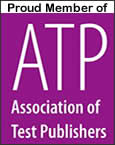Language Test Guide

General foreign language tests are used in schools to assess a student’s knowledge on a particular language, such as Spanish, French, German or Italian. Students are now learning foreign languages at the elementary level, and this continues through middle and high school and into college.
How General Foreign Language Tests Work
Students taking a general foreign language test usually will do this within the confines of the school building. Teachers administer the exams and design the tests as they best see fit to the class they have been educating. They also can use tests from a particular textbook or other type of guide of curriculum. The test content varies depending on the class and the institution, but it can include questions in the following formats: multiple-choice, essay, true or false, fill-in-the-blank or a combination of the aforementioned styles. Tests usually are taken in paper and pencil format, but with today’s technology also can be on the computer. Parts of the test will be in English, to give instruction, but students will have to translate information from the language they are being tested on, like Spanish, French or German.
General Foreign Language Test Question and Format Examples
Foreign language tests come in a variety of forms, but some of the most common test structures include essay, multiple-choice, fill-in-the-blank and true or false. Some examples might include:
Multiple Choice: Bathroom translates to the Spanish language as:
- el cuarto de baño
- la sala
- el comedor
- el dormitorio
For this style of question, the test-taker will need to choose the letter corresponding with the correct answer. In this case, the correct answer is A, and there only is one correct response.
True or False: “J'ai faim. Il faut que je mange” means that one is hungry and needs to eat.
Here, the student must mark the above statement as true or false. The above sentence is true.
Fill-in-the-blank: The official Italian language spoken originates from ________ dialect.
Here, no answers are suggested, so the student has to supply the correct word to complete the sentence. The answer in this case is Tuscan.
Although these are tests on foreign languages, the student should be prepared to answer some questions about the culture of the figuring territories where people speak the languages on which the students are being tested.
Essay: Describe how you would order a meal at a restaurant in Spanish.
Essay questions are meant to make a student think. The questions require the test taker to take information and put it into a concise, clear composition. Essays are open-ended, and allow students to be creative. However, with foreign language tests, students must be careful that they properly translate sentences because errors surely will be marked and points might be deducted from the exam grade.
How to Prepare for General Foreign Language Tests
In order to be ready for a foreign language test, the student must have a firm grasp on the material at hand, as is the case with any subject one is studying for. First, the student must figure out what his or her resources are, and use them. The teacher usually provides study guides, tutorials or other suggestions as to how to prepare for the test. Also, going over material that has been reviewed in classes leading up to the exam is a good idea. If a student is having trouble in a particular area, he or she can ask the teacher for additional help, or take advantage of a tutoring service to ensure making the grade. Forming study groups and testing each other is a valuable activity that helps students absorb the information.
How to Interpret General Foreign Language Test Results
Once the foreign language test has been completed and graded, the scored exam will be given back to the student. The test can either be scored right after the test or after a period of time lapses. Generally, the four areas of scoring on foreign language exams are listening, reading, writing and speaking, as these all are important facets of learning a new language. Scores usually are figured out on a 100 percent scale, and taking the number of correct answers divided by the number of total answers. For example, if there are 50 questions on the test, and a student answers, 40 of those questions correctly, the teacher will divide 40 by 50 to come up with 80 percent on the test. Letter grades are then assigned to percent values. Grading does, however, vary, depending on the institution.
If you are in need of assistance for a foreign language exam, please see our language test directories:


 Tests.com has been honored with the 2020 Academics' Choice Smart Media Award, a prestigious seal of educational quality. The Academics' Choice Advisory Board consists of leading thinkers and graduates from Princeton, Harvard, George Washington University, and other reputable educational institutions. Our award is for no particular test but for our site and test preparation system as a whole.
Tests.com has been honored with the 2020 Academics' Choice Smart Media Award, a prestigious seal of educational quality. The Academics' Choice Advisory Board consists of leading thinkers and graduates from Princeton, Harvard, George Washington University, and other reputable educational institutions. Our award is for no particular test but for our site and test preparation system as a whole.
